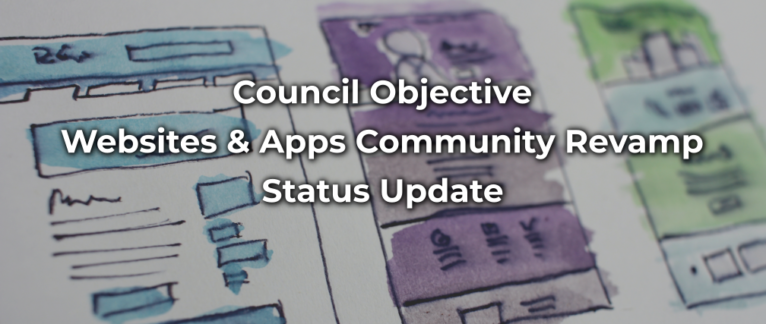Wrapping up the Fedora Websites and Apps Community Initiative: Part III
The article discusses the progress of the Fedora Websites and Apps Community Initiative. It covers team processes, participation in community events, design mockups for revamped websites, selection of front-end technologies, and the kickoff of the Fedora Websites 3.0 initiative.

This is the third post in a series covering details about the journey of the Fedora Websites and Apps Community Initiative, those who were involved in making it a grand success, and what lies ahead down the road for the team. If you have not already, read the previous post before delving into this one.
Processes and Visibility
Around April 2022, I shifted my focus to rewriting our team documentation. I aimed to maintain high codebase standards for our websites and applications while ensuring a clear understanding of our team processes. This would ensure that the team’s work could continue even after completing the community initiative. We actively participated in community events such as Fedora Linux Release Parties and Nest With Fedora, where we shared updates on our projects and discussed special team initiatives. Ashlyn Knox and Onuralp Sezer went the extra mile by organizing interactive workshops during these events, both personally and on behalf of the team. Their efforts aimed to onboard new members and educate the community about the latest developments in web technologies. Meanwhile, Ojong Enow and Subhangi Choudhary diligently pushed forward with their assignments as we neared the completion of our cohort.
Getting our Mindshare Representative
We made significant progress in an organic manner, ticking off numerous outcomes and outputs from the planned checkpoints in our Fedora Websites and Apps council objective charter. By June 2022, we were fully engaged in designing mockups for our revamped websites. The first mockup, created by Mairin Duffy, showcased the revamped Fedora Workstation website. During this time, we also embarked on several exciting experiments, such as Matthew Miller‘s use of Discourse as the frontend for Fedora Badges, and discussions about the potential transition to GitLab due to the sunset of the Taiga service in our community infrastructure. Additionally, Onuralp Sezer was chosen as the Mindshare representative for the team. We received numerous ideas that reinforced our commitment to meeting the community’s requirements. These ideas included enhancing the visibility of Kinoite and Silverblue spins within our maintained websites.
Dawn of the Fedora Websites 3.0
By August 2022, we witnessed the rise of one of the first in-person local community events after a prolonged period of online-only events due to the risks associated with COVID-19. Fedora Hatch, a series of smaller local events organized worldwide, presented a valuable platform for advocating for our team and attracting more contributors. During this time, I created the Fedora Websites 3.0 manifesto and shared it with Red Hat teams and the Fedora Project community. This initiative kick-started our efforts to create renewed websites for Fedora Linux. We initiated conversations on the tooling and frameworks through Fedora Discussion. Emma Kidney joined our efforts and provided the second design mockup for the Fedora IoT website. Additionally, we successfully completed the Meetbot Logs 2.0 project, which marked our first successful web application rewrite from the Council Objective charter.
Reboot In Progress
Fedora Websites 3.0 emerged as a catalyst to reignite the team’s enthusiasm and determine our ability to handle such a significant expansion of our responsibilities. Through extensive study and collaboration with Red Hat’s Community Platform Engineering team, I worked to identify the most suitable front-end technologies that would allow the community to contribute efficiently while lowering the entry barrier for newcomers. We selected NuxtJS for websites and VueJS for applications, a decision that not only influenced the community but also represented a significant victory for the community initiative within Red Hat. By September 2022, we had already initiated discussions on the long-term maintenance of Fedora Badges. Furthermore, we shared the third mockup for the Flock To Fedora website, designed by Ashlyn Knox, with the community for feedback on Fedora Discussion.
This will be followed by the “Wrapping up the Fedora Websites and Apps Community Initiative: Part IV” post.
This article was originally posted on Fedora Commblog on 18 May 2023.